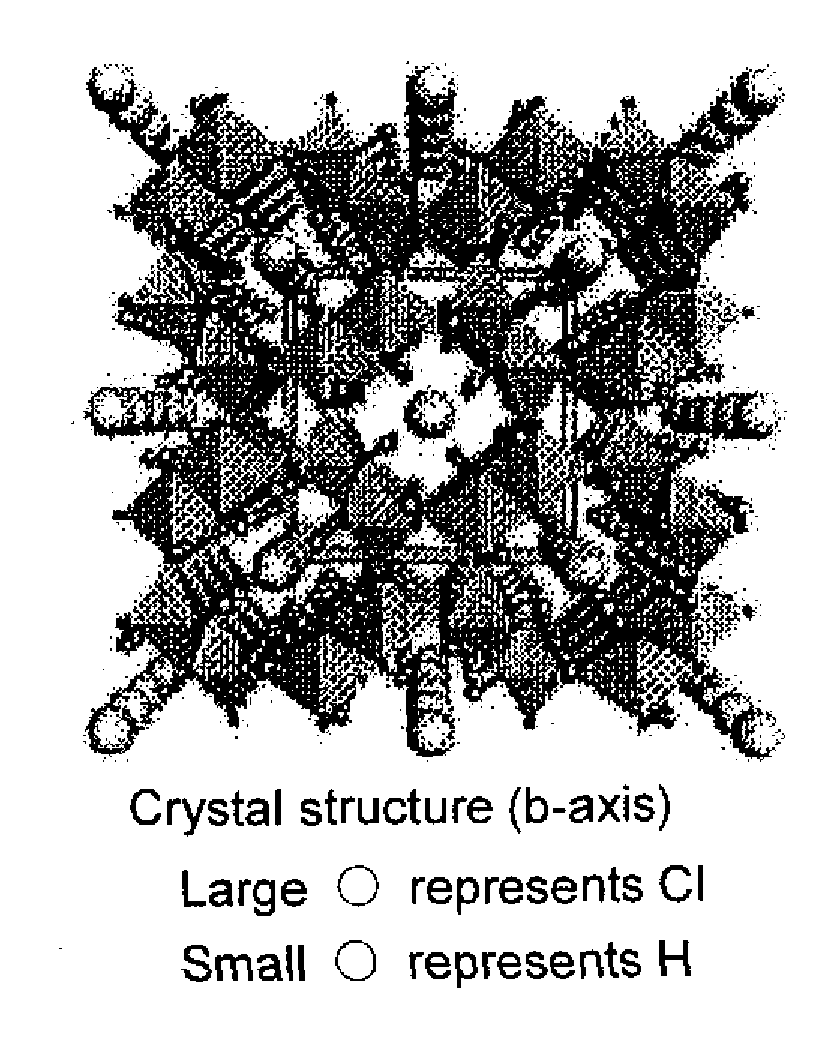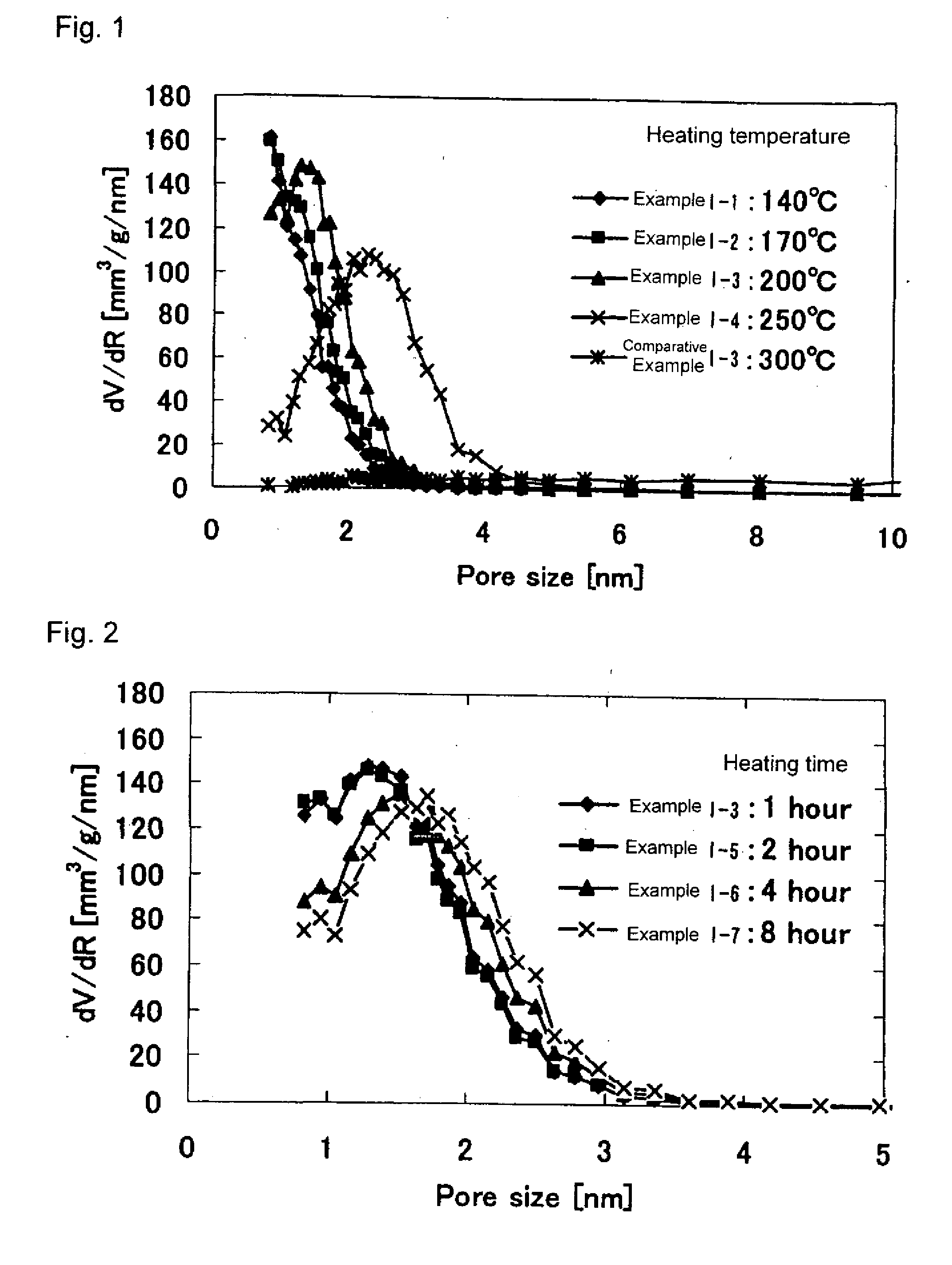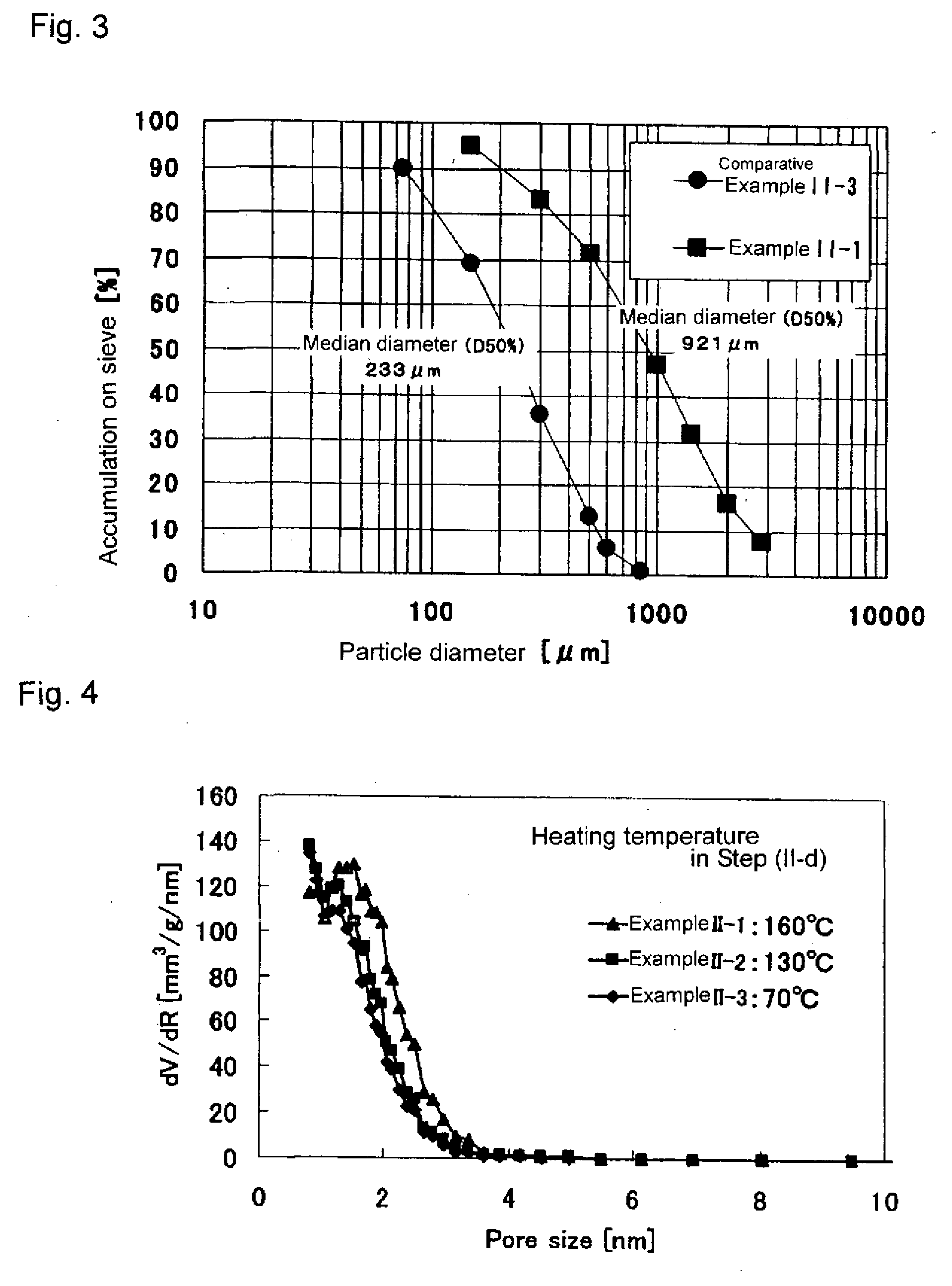Method for producing iron oxyhydroxide and adsorbing material comprising iron oxyhydroxide
a technology of iron oxyhydroxide and adsorbent material, which is applied in the direction of lithium compounds, other chemical processes, separation processes, etc., can solve the problems of harmful to human health and the ecosystem, algae bloom, and eutrophication in public closed water bodies such as lakes and basins, and achieve excellent adsorption ability to phosphorus components, excellent adsorption power, and great pore size
- Summary
- Abstract
- Description
- Claims
- Application Information
AI Technical Summary
Benefits of technology
Problems solved by technology
Method used
Image
Examples
first embodiment
I. First Embodiment
Example I-1
[0187]Iron (III) chloride (FeCl3.6H2O) was dissolved in water in such a manner that the concentration became 0.1 mol / l. To the resultant solution was added 2 mol / l aqueous NaOH solution while stirring at room temperature so that the solution had a pH of 4. The precipitation product generated in the solution was allowed to stand for 24 hours, followed by suction filtration, a precipitate was thereby obtained. The thus-obtained precipitate was dried at 50° C. for 48 hours in an oven, obtaining FeOOH.
[0188]The thus-obtained FeOOH has the BET specific surface area of 50.6 m2 / g, and the average particle diameter as aggregates of 200 μm. The resultant iron oxyhydroxide was placed in purified water in such a manner that its pulp concentration (weight percentage of dried iron oxyhydroxide in water) became 5%, followed by stirring the mixture at room temperature for 5 minutes. After the stirring, the resultant mixture was subjected to suction filtration, obtaini...
examples i-2 to i-7
[0193]Iron oxyhydroxides of Examples I-2 to I-7 were obtained in the same manner as in Example I-1 except that the drying temperature and drying time in Step (I-d) were changed to those shown in Table 1. The physical properties thereof are shown in Table 1.
second embodiment
II. Second Embodiment
Example II-1
[0201]Iron (III) chloride (FeCl3.6H2O) was dissolved in water in such a manner that the concentration became 0.1 mol / l. To the resultant solution was added 2 mol / l aqueous NaOH solution while stirring at room temperature so that the solution had a pH of 4. The precipitation product generated in the solution was allowed to stand for 24 hours, followed by suction filtration, a precipitate was thereby obtained. The thus-obtained precipitate was dried at 50° C. for 48 hours in a thermostatic oven under 100% carbon dioxide atmosphere, obtaining FeOOH.
[0202]The resultant iron oxyhydroxide was placed in purified water in such a manner that its pulp concentration (weight percentage of dried iron oxyhydroxide in water) became 5%, followed by stirring at room temperature for 5 minutes. After the stirring, the resultant mixture was subjected to suction filtration, obtaining an iron oxyhydroxide. The resultant iron oxyhydroxide was dried at 55° C. for 24 hours. ...
PUM
| Property | Measurement | Unit |
|---|---|---|
| Temperature | aaaaa | aaaaa |
| Temperature | aaaaa | aaaaa |
| Temperature | aaaaa | aaaaa |
Abstract
Description
Claims
Application Information
 Login to View More
Login to View More - R&D
- Intellectual Property
- Life Sciences
- Materials
- Tech Scout
- Unparalleled Data Quality
- Higher Quality Content
- 60% Fewer Hallucinations
Browse by: Latest US Patents, China's latest patents, Technical Efficacy Thesaurus, Application Domain, Technology Topic, Popular Technical Reports.
© 2025 PatSnap. All rights reserved.Legal|Privacy policy|Modern Slavery Act Transparency Statement|Sitemap|About US| Contact US: help@patsnap.com



